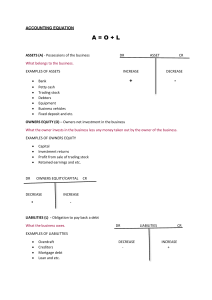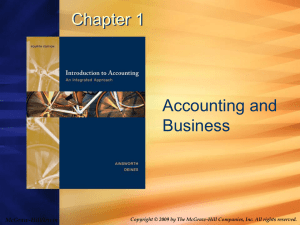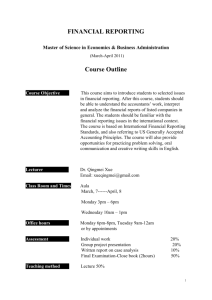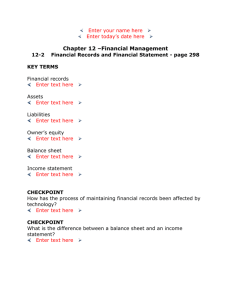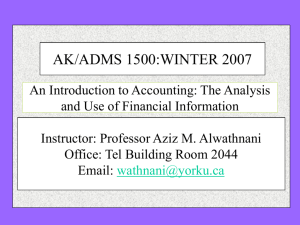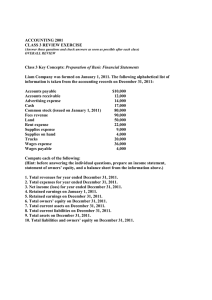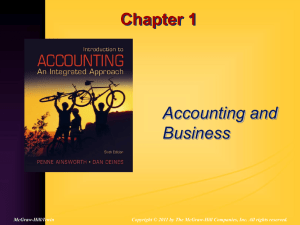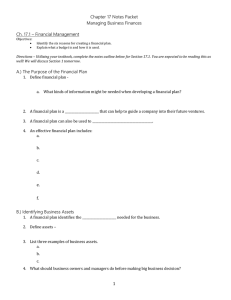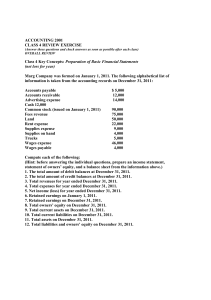Accounting Equation & Financial Statements Overview
advertisement
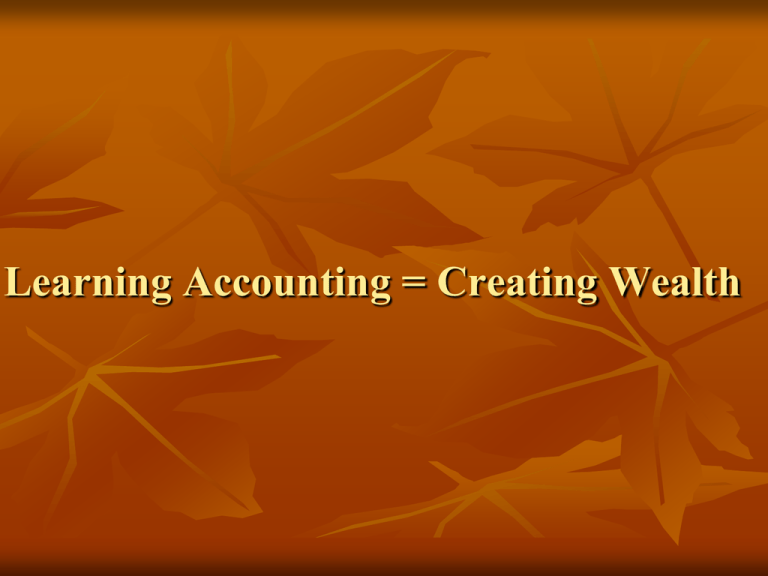
Learning Accounting = Creating Wealth Accounting Equation RAHUL JAIN (Striving for excellence) BCOM (H), MBA, FCS Accounting Equation Assets = Debt + Owners’ equity Debt are the entity’s economic obligations to nonowners. Owners’ equity is the excess of the assets over the liabilities. The owners’ equity of a corporation is called stockholders’ equity. Learning Objective Analyze typical business transactions using the Accounting equation. King Hardware Transactions 1 2 3 4 Initial investment by owners, $100,000 cash. Acquisition of inventory for $75,000 cash. Acquisition of inventory for $35,000 on open account. Merchandise costing $100,000 was sold on open account for $120,000. Balance Sheet The balance sheet (also called statement of financial position or statement of financial condition) is a snapshot of the financial status of an organization at a point in time. Balance Sheet Assets =Liabilities Assets are economic resources that are expected to benefit future activities of the organization. Liabilities are the claims against, or interests in, the assets of the organization. Income Statement The income statement measures the performance of an organization by matching its accomplishments (revenue from customers, which is usually called sales) and its efforts (cost of goods sold and other expenses). Accrual Basis versus Cash Basis The accrual basis of accounting recognizes revenues and expenses when they occur instead of when cash is received or disbursed. The cash basis of accounting recognizes revenue and expense when cash is received and disbursed.

